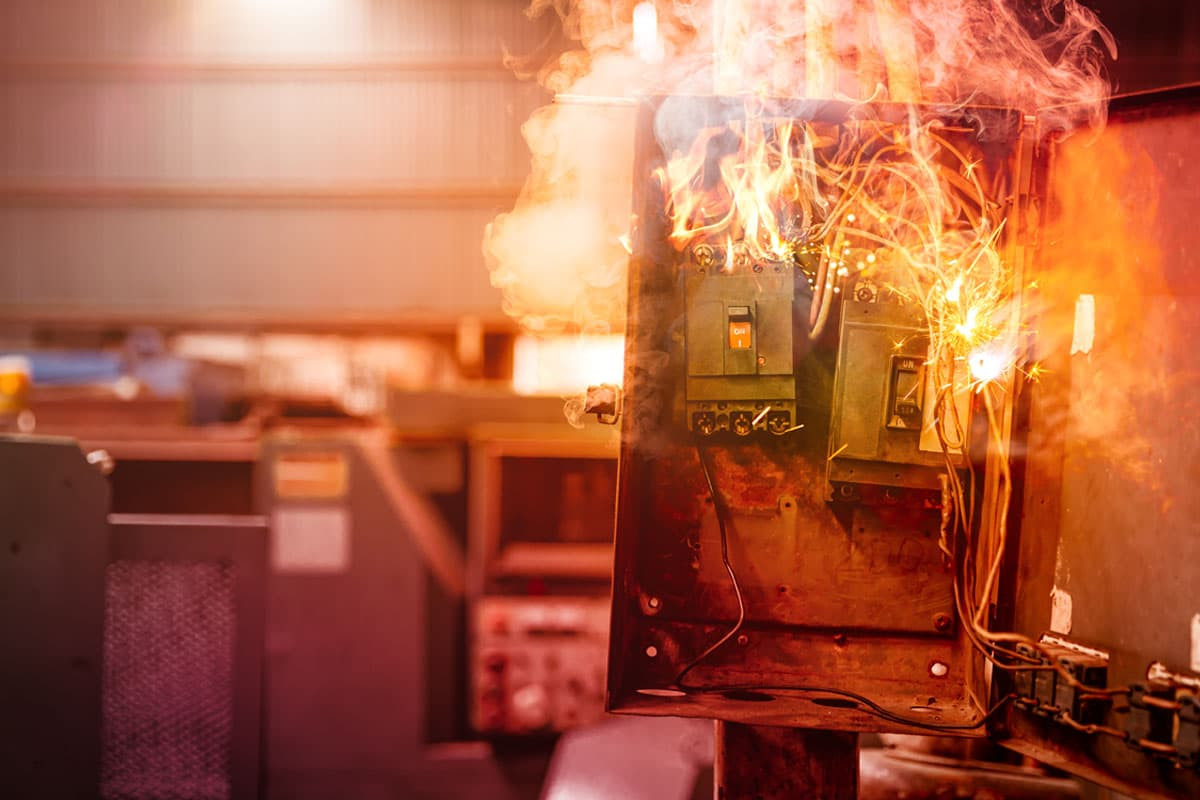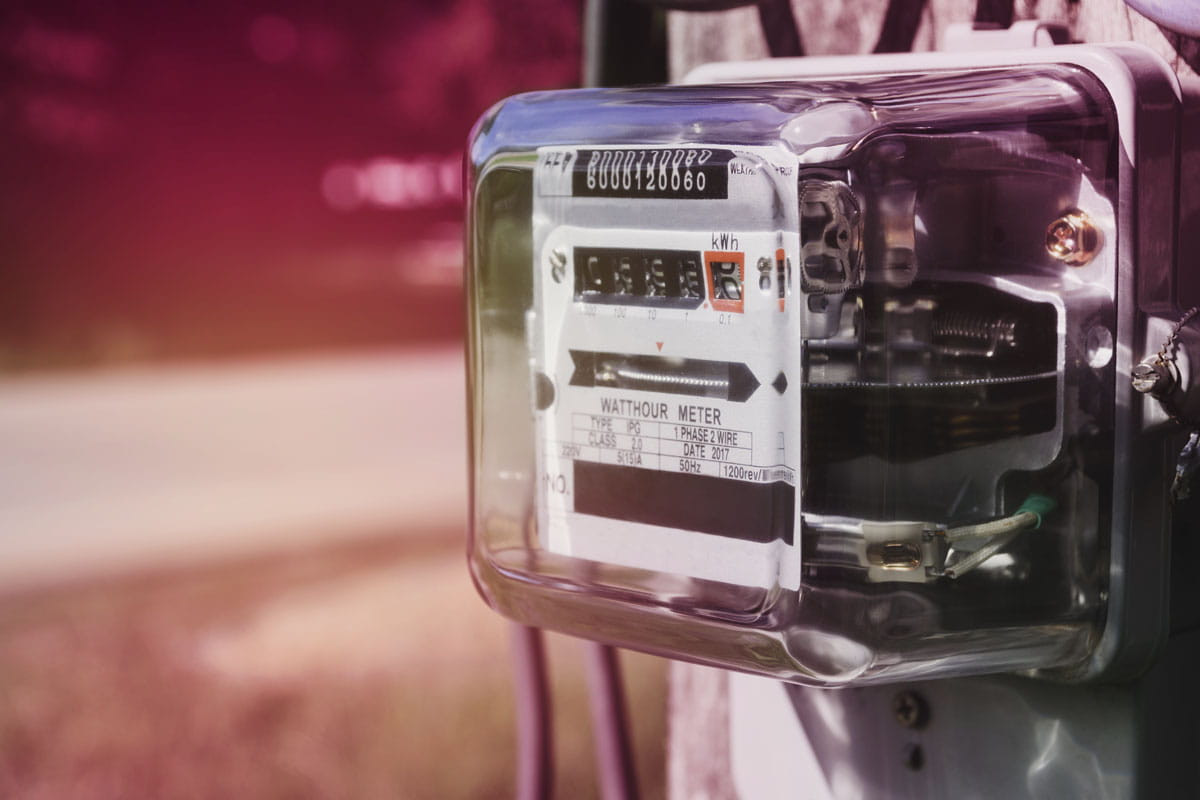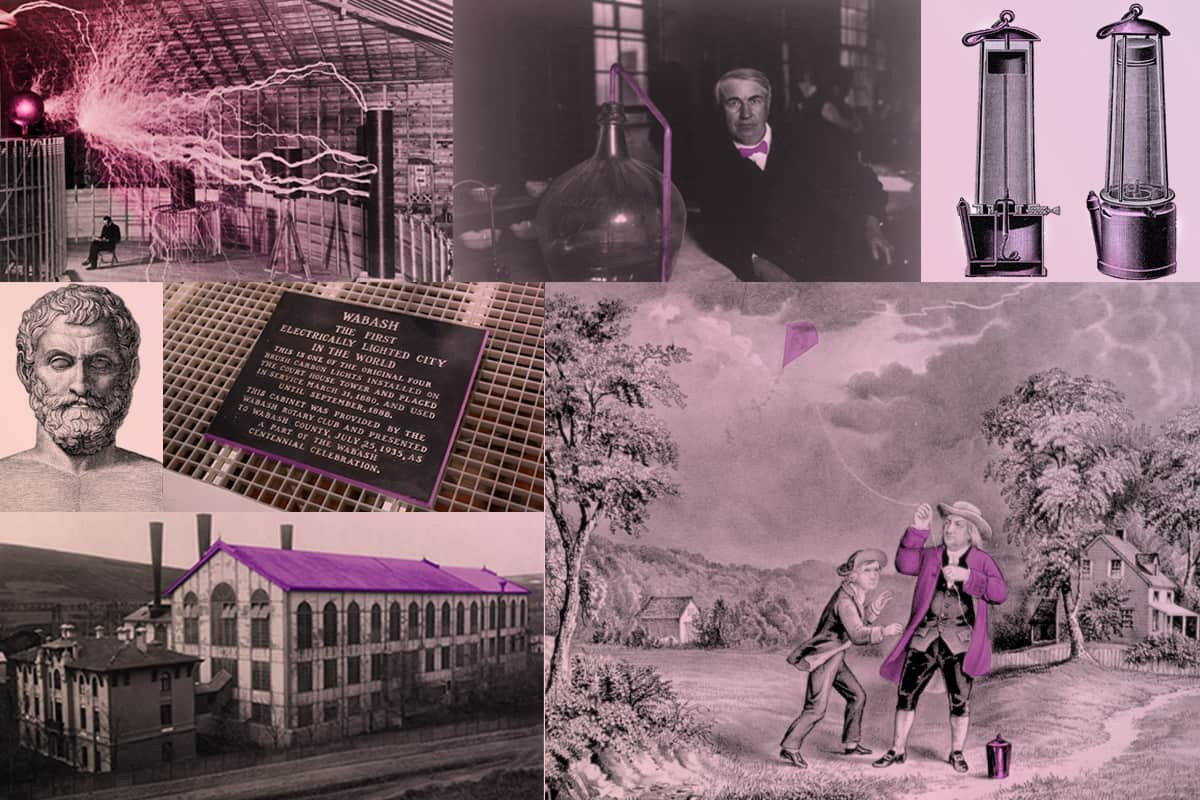
What Is a Short Circuit? Why Does It Happen?
What is in this article?
A short circuit is an electrical event that can cause dangerous accidents, equipment malfunctions or failures, electrocutions or fires by causing damage that can seriously harm the entire electrical system. However, it is possible to prevent short circuits and avoid serious damage using some methods.
In this article, you will learn what practical steps you can take to check if there is a short-circuit current, which you often encounter in everyday life, and to prevent a short-circuit.
What Is a Short Circuit?
A short circuit occurs when two or more points with different voltages in a circuit come into contact intentionally or accidentally. Even when the switch in the circuit is closed, the electric current attempts to reach the receiver by flowing through a point with low or zero voltage.
With electrical installations, this occurs when the insulator that comes between the phase conductors or with the ground is punctured or cut with a conductor. Short circuit failures can be caused by internal or external factors.
Internal influences include transmission line or equipment failures, aging of insulation, deterioration of insulation of generators, transformers, and other electrical equipment, improper installation, and inadequate design. In particular, faulty and very old insulation can cause live wires to contact neutral wires. Any damage to the equipment cables is also the cause of a short circuit.
Outside influences include equipment overloads, insulation failures due to surges, and mechanical damage from people. A short circuit creates a circuit in the electrical system whose impedance value (resistance to current in a circuit) is smaller.
In this case, all the supply points of the circuit send a large current in the direction of the short circuit point. This results in a load on the circuit components. In order for the system to continue to function, the shorted part must be disconnected from the system.
Short circuit current can cause two different damages in the circuit, namely dynamic and thermal. The dynamic effect can cause damage to the windings of transformers and to the supporting insulators used to insulate the power transmission lines in the circuit, while the thermal effect can cause overheating and burning of electrical equipment.
How Is the Short Circuit Check Performed?
In the event of a short circuit, the short circuit must be detected immediately in order to minimize the damage. In this way, the risk of damage to the cable and insulation can be reduced and possible fires prevented.
The following steps should be followed when checking for a short circuit:
 The first step in checking for a short circuit is to look for physical signs. These may include visible burns or melted metal on wires, a burning smell, or flickering lights.
The first step in checking for a short circuit is to look for physical signs. These may include visible burns or melted metal on wires, a burning smell, or flickering lights.- If a potential short circuit has been detected, a multimeter can be used to measure the voltage. Measuring a lower resistance than expected indicates that the controlled current is being diverted away from the field and a short circuit is present.
- After the cause of the short circuit is determined, power to the circuit is interrupted by turning off the circuit breaker.
- The AC voltage is then selected using the multimeter's resistance setting and the metal probes are inserted into the problem slot or breaker. At this point, the multimeter should read 0 volts. This indicates that no current is flowing through the circuit. If for some reason voltage is present, the procedure must be repeated to find the correct circuit breaker and verify that there is no current in the circuit.
- If there is no current in the circuit, the multimeter is switched to ohms and the wiring is checked. If the multimeter indicates continuity, it means that there is a short circuit. This can be caused by a faulty breaker, a broken wire, or a faulty outlet or switch. To eliminate the short circuit, the defective part must be replaced.
- If the multimeter still indicates continuity, all wires should be checked to make sure they are not in contact with anywhere and that there are no bare copper wires that could cause a short circuit. After making sure there are no problems, the wires are screwed back into their original terminals and then reinstalled in the box with the wall plate.
When checking to see if current is flowing through the circuit with a tester screwdriver, care must be taken to ensure that its tip only gets into touch with a point. A short circuit can occur if the tester screwdriver is in contact with more than one connection point at a time.
Why Is a Short Circuit Dangerous? What Problems Does It Cause?
Electric current can flow through the human body, which has a very low resistance. A short circuit can result in injury or death from electric shock and burns. During a short circuit, a large amount of current flows through the system. This creates extremely high temperatures that can melt plastics and ignite combustible materials such as wood or cloth.
We can speak of thermal and mechanical effects caused by a short circuit that permanently damage the circuit. However, there are also physiological risks such as burns.
What Can Be Done to Prevent a Short Circuit?
 Additional devices and parts can be used to protect equipment from short-circuit currents or to affect them only slightly. Fuse is one of them. When the current exceeds the value for which the circuit is designed, it cuts off the current, preventing a short circuit. The electrical fuse is therefore a good way to prevent short circuits and all the damage they cause.
Additional devices and parts can be used to protect equipment from short-circuit currents or to affect them only slightly. Fuse is one of them. When the current exceeds the value for which the circuit is designed, it cuts off the current, preventing a short circuit. The electrical fuse is therefore a good way to prevent short circuits and all the damage they cause.
Switches function similarly to fuses in that they prevent current surges. They constantly monitor the current load and prevent short circuits by interrupting the power supply when the current exceeds a certain limit. The switches and breakers that turn the circuit on and off are controlled by protective relays in the event of a fault. This interrupts large short circuit currents.
Automatic switches are equipped with thermal and magnetic protection elements to protect the equipment. These elements are responsible for automatically breaking the circuit in the event of both overcurrent and short circuit.
With medium voltage transformers, the voltage outputs can be connected separately to bus bars (the unit in which the electrical energy is collected and distributed) to increase the impedance and limit the short circuit. However, since the coil is constantly moving in this method, a decrease in active or reactive power may be observed.
As another method, the star point in medium voltage transformers can be grounded through the coil and voltage. This method can also be used to prevent the impedance from dropping to very small values by keeping the transformer power values within certain limits.
Care must also be taken to ensure that the phase cables in the circuit do not come into contact with each other to prevent short circuits. It is also important to use the correct cables and high quality equipment to avoid overheating.
5 Effective Methods to Prevent Short Circuit at Home
You can use the following 5 methods to prevent short circuits in your home:
-
Check Electrical Outlets
Some of the main causes of short circuits are faulty wiring, loose connections and outdated electrical outlets. Although these problems can be difficult to diagnose, it's helpful to first check the wire that each outlet is connected to. A professional can be hired to check connection parts that are located behind walls.
Checking sockets before each use can also help prevent short circuits. You can check the sockets with a tester screwdriver. If there is a risk of a short circuit in a socket, there may be burn marks and a burning smell at the outlet. Watch out for explosions and sparks coming from the socket, and the sockets should not be older than 15-20 years.
-
Caution When Operating Electrical Equipment
A short circuit can be caused by a fault in the electrical system, but also by the circuit of the electrical appliances themselves or by incorrect wiring. Therefore, like sockets, appliances should be checked before being plugged in.
Especially for open circuit appliances, it is important to identify damaged cables or wires and damage to the appliance's circuit.
-
Limit Power Consumption During Stormy Weather
Lightning can cause short circuits and dangerous situations because it has an excessive electrical charge. Limiting power consumption during thunderstorms with lightning and thunder can reduce the risk of short circuits. In addition, damage from surges that may occur can be minimized.
-
Perform Circuit Breaker Maintenance
The electrical system is protected against short circuits by circuit breakers. These components, located in the control panel, trip when the current is unstable and are each connected to a different circuit. In order for the circuit breaker to perform its function, maintenance must be timely and properly performed.
Each circuit breaker should be inspected for damage, as well as the circuits the breakers serve, and the presence of dust and dirt on the panelboard and circuit breakers.
-
Schedule an Annual Electrical Inspection
Electrical inspections can uncover damage to wires, sockets, the electrical system and anything else before it causes problems. Professionals can detect or prevent short circuits by fully inspecting the electrical system. For this reason, an electrical inspection should be performed at least once a year.
What Are Types of Short Circuits?
A short circuit can be caused by conductors in the circuit as well as faults with grounding. Accordingly, symmetrical and asymmetrical faults may occur. Short circuits can be divided into different categories, such as two-phase short circuits, three-phase short circuits, two-phase ground short circuits and single-pole short circuits. Three phase faults are symmetrical short circuits, the rest are called asymmetrical.

-
Normal Short Circuits
A normal short circuit occurs when a current carrying wire comes into touch with a neutral wire. In this case, the resistance drops instantaneously and the current begins to flow in a large amount along a different path than normal.
-
Short Circuits Caused by Grounding
A short circuit caused by grounding occurs when the current carrying wire comes in contact with a grounded part of the system. This part can be a grounded metal wall receptacle, a bare ground wire, or a grounded part of any equipment.
-
Symmetrical Short Circuit
A symmetrical short circuit means that all three phases are shorted at the same time. This is the most damaging type of short circuit that can occur in a circuit. When such a fault occurs, even if the system continues to run, major damage to components can occur.
In the case of a symmetrical short circuit, which rarely occurs, it is necessary to calculate the equivalent impedance of the circuit, that is, the resistance of each component to the current, starting from the point where the fault occurs.
-
Asymmetrical Short Circuit
Short circuits that are asymmetrical with respect to the zero axis of the current surge. They are the most common faults in the power grid. This type of fault results in asymmetrical currents with different magnitudes. These short circuits are also called unbalanced faults because they cause unbalanced currents in the system.
Example of a Short Circuit

Are you checking the electrical equipment in your home? What do you do to guard against the risk of a short circuit? We are eager to hear your comments.


 Online Services
Online Services Application Inquiry
Application Inquiry Pay Assurance Fee
Pay Assurance Fee Query Installation Number
Query Installation Number Compensation Fee Inquiry
Compensation Fee Inquiry Automatic Payment Order Inquiry
Automatic Payment Order Inquiry Partnership
Partnership




Leave a Comment
Comments (3)
A
ALİ Güvercin
400 A kompak şaltere 160 kW soft starter bağlayıp bu pass kontaktörü bağlantısı yaparak ölçüm yaptığımda 2 faz arasında kısa devre gördüm ama cihaz içinde trafo olduğunu düşünerek enerji verdim anındaa patlama oldu orada hatayı gördüğüm halde basiretim bağlanmıştı gerçeği görmeme rağmen yanlış karar vemiştim Allah korudu sistem bozulmadan hatalı bağlantı yaptığımı farkettim bağlantıyı düzelttim devreye tekrar enerji verdim motoru çalıştırdım ben bu hatayı nasıl yaptım basiret bağlanması oldu sanırım
A
Ali
Hocam merhaba. Toplam 1 saat ancak kullandığım akülü matkap ahşapa zımparalama yaparken kıvılcım çıkarıyordu. Koku ve duman veriyor. Bataryayı da ısıtıyor. Tam güç ile 5 saniyeden kısa süre çalışıp duruyor. Az güç vererek daha uzun çalışıyor. Neden olabilir? Ne yapılabilir? Teşekkür ederim.
N
Niyazi kocabaş
Slm 26.11.23gunu evimin saç olan kısmından giren şebeke besleme kablosu gerdirme teli içe doğru yanmış ve sigortalar atmadan enerji kesilmiş gerdirme kablosu deregin koluna bağli idi yağmurda akım çekmiş olabilimi